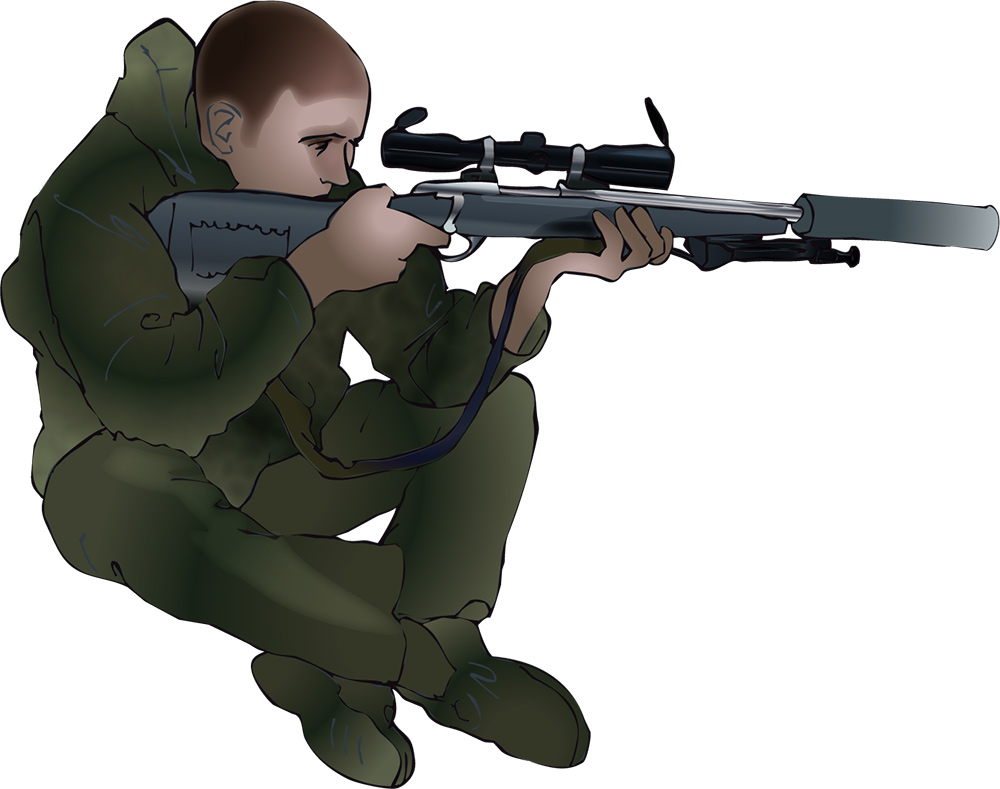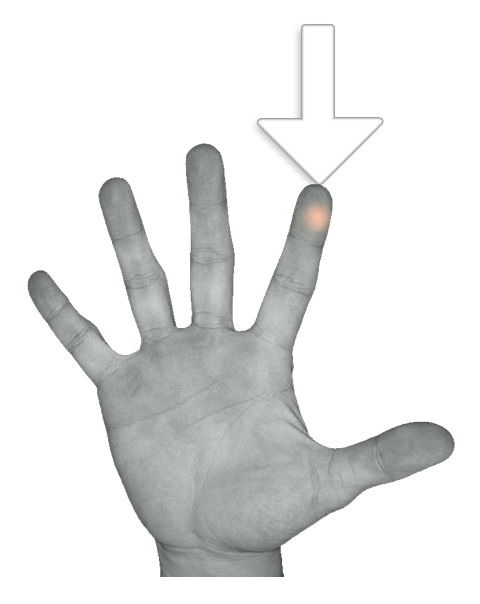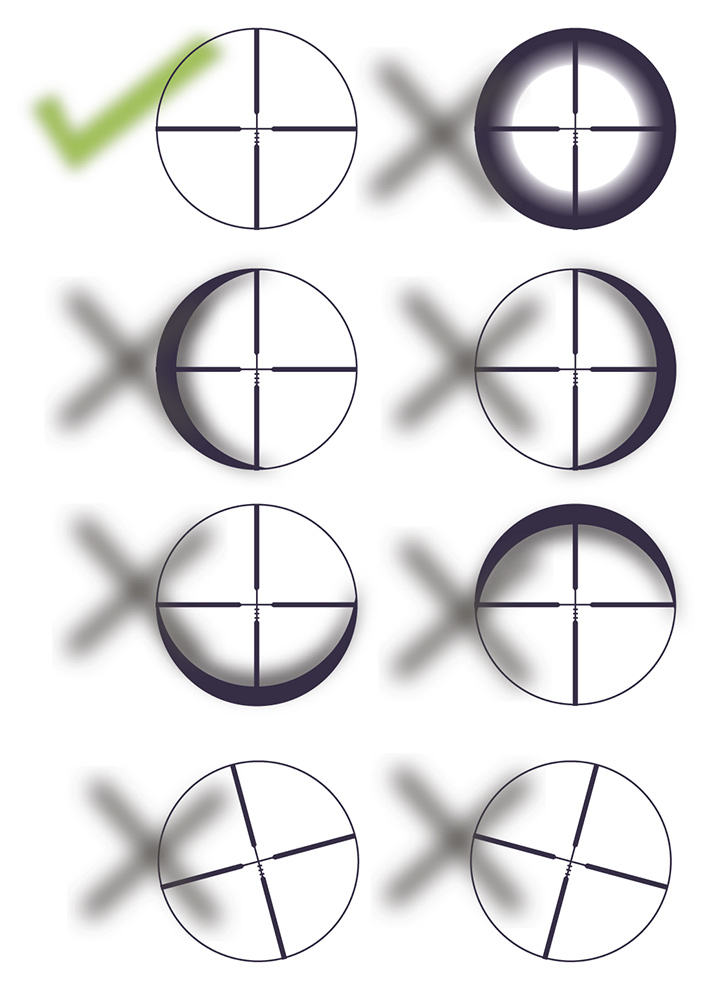
Aim
Marksmanship describes a person’s ability to shoot a firearm accurately. This guide aims to describe the following:
- Basic marksmanship principles;
- Limitations of environmental factors, such as weather;
- Personal limitations which change depending on physical exertion and environmental conditions.
Marksmanship Principles
- The shooting position and hold must be firm enough to support the rifle*.
- The rifle must point naturally at the target without any undue physical effort.
- Sight alignment and sight picture must be correct.
- The shot must be released and followed through without undue disturbance to the position.

| Ready | Aim | Fire | Follow-through | Be aware | |
| As comfortable as practical; allowing for an unforced point of aim; firm but not tense muscles, butt well into shoulder. | Final fine adjustments using knee if prone, allowing for movement due to breathing | Steady, stable, firm | Absorb recoil, continue steady hold, chamber a round. | Avoid flinching by not anticipating the recoil | |
| Clear, fills the eyepiece no crescent shading, target clearly visible | Slight reticule movement down target as breath in, focus back and forth at target and reticule | Crosshair comes to rest precisely on target, focus is on the reticule at instant of fire | Continue to focus on target looking for bullet strike, observe reaction to shot. | Keep the sight firmly on the target and follow through (that is, watch the bullet hit) | |
| Normal cycle | Deeper inhale exhale | Hold | Back to normal | After exertion, pause before shooting to control breathing | |
| Safety off, tip of finger resting lightly on flat of trigger | Ease pressure on to take up slack, just top edge of trigger release | Straight squeeze exerting no side ways pressure | Leave finger lightly touching trigger | Squeeze, rather than pull the trigger |
Factors affecting marksmanship
- Understand and be able to follow the basic marksmanship principles summarised by position, sight picture, breathing, trigger pressure and follow through.*
- Know your ability to group shots in different circumstances, in particular when shooting after exertion, from different positions and at different ranges.
- Only take shots that are within your capability.
- Know at what distance your rifle is zeroed,** and where your shots will fall at other distances.
- Estimate the range as accurately as possible. Use a range-finder or take advice if available.
- Poor light, mist or snow all make accurate shooting more difficult; take account of the effect of cross-wind on your bullet.***
- Ensure that nothing will impede the bullet on its flight path. The view through the telescopic sight may be clear, but because the muzzle is beneath the line of sight, the path of the bullet may be obstructed by an unseen object such as vegetation or a rock.
Breath Control

(top) normal breathing cycle (next) empty lung technique with red bar denoting holding the breath and fire on completion; (third) is the half-full lung technique with slight inhale and shorter hold of breath; (bottom) is the three-quarter full lung technique with a short holding of breath
As you breath in the cross hairs will move down the target and then come back up as you breathe out. We tend to breathe out to the same level and the diaphragm is more relaxed. Ensuring the cross hairs come to rest at the desired point of aim on an empty lung is therefore more stable. Under certain conditions, woodland stalking for example, you may not have enough time to complete the breathing cycle and you should therefore practice the half and three quarter full lung technique

Use the most sensitive part of your finger. Trigger pressure. Squeeze the trigger and remember to follow through.
Trigger pressure
Use the most sensitive part of your finger. Squeeze the trigger and maintain finger lightly touching the trigger immediately after the shot goes off

Top left is the only correct ‘scope picture. With cheek resting on the butt, move your head back and forward until the correct picture is seen. This usually occurs at a distance of 4-5 inches between the scope and your eye
![]() Sight
Sight
Top left is the only correct ‘scope picture. With cheek resting on the butt, move your head back and forward until the correct picture is seen. This is usually results in a distance of 4-5 inches between the scope and your eye
![]() Canting
Canting
Avoid canting and be especially aware of this when using bipods
